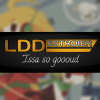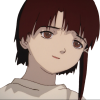Posted 28 April 2016 - 01:00 PM
Current code is here (wJQ7jav0)
My problem (as in the title) is I want a fill tool for my paint program, PAIN. Trouble is, I haven't the slightest idea of how it works.
The paint variable (paintEncoded) is stored in a table format, like this:
My problem (as in the title) is I want a fill tool for my paint program, PAIN. Trouble is, I haven't the slightest idea of how it works.
The paint variable (paintEncoded) is stored in a table format, like this:
paintEncoded = {
{
x = 1,
y = 4,
char = " "
txtcolor = 1,
bgcolor = 16,
metadata = 2,
},
{
x = 2,
y = 4,
char = " "
txtcolor = 1,
bgcolor = 16,
metadata = 2,
},
}
I already got a function to make sure that no value in paintEncoded appears twice, so keep that in mind, I guess



